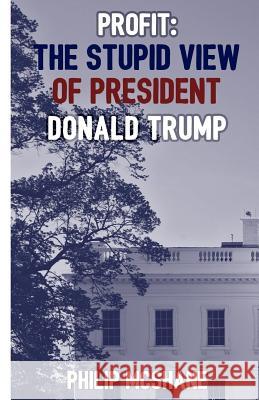Profit: The Stupid View of President Donald Trump » książka
Profit: The Stupid View of President Donald Trump
ISBN-13: 9781988457017 / Angielski / Miękka / 2016 / 162 str.
The book deals with a massive needed shift in economic theory and practice. This need is generally recognized but very few clues to it are present in the current culture of politics or economics, financial analyses or public discourse. Profit is recognized by all as being at the heart of the current economic problem. Think of election or government promises regarding minimum wages or women's wages, or general increasing of purchasing power. The problem of profit and its distribution, indeed, lurked behind most of the bitter rhetoric prior to the nominations and in the subsequent debates between Hillary Clinton and Donald Trump. President Trump has hopes about economic growth, but on the issue of profit he shares a common muddle. A quiet but serious pause over a non-stupid view of profit exposes the silliness, the abusiveness, the immorality. The dominant content of the book is a pedagogy of the new view of profit, which depends on the reluctant admission by the community of economists that there is a deep flaw in present efforts at economic analysis. That flaw has been a topic in the writings of some of the great economists of the twentieth century. But the leading searcher of the century was Joseph Schumpeter, who pushed for a new view in two highly respected books. He writes of the crisis in terms of "crossing the Rubicon" to arrive at dynamic analysis, but he failed to develop refined scientific distinctions in the productive process. The Russian economist, Michael Kalecki came nearer such refinement, and the Cambridge economist Joan Robinson recognized this. What is the common muddle? What is the flaw? It is best to point simply to the newness of the view by a parallel with Newton's transformation of astronomy through his theory of gravitation. Picture, then, Newton sprawled under the apple tree, looking up at apples dangling and also the moon visible through the leaves. His leap to gravitation is symbolized by his being struck-in both senses, so to speak-by a falling apple. But the full power of his view comes forth in the question, "Why does the moon not also fall?" The culture of Europe at the time was still haunted by a division of bodies into earthly and heavenly, the latter being radically different, constituted by quintessential matter. There was thus a prevalent mythology of two types of body. Newton leaped from two types to one through his achievement. The present state of economics is a very fixed culture of one-flow analysis, symbolized in the culture by talk of GDP. The leap of Lonergan's invention was to identify, after a more than a decade of historical and theoretic work, the historical reality and scientific identity of two flows. So, very simply, where Newton leaped from 2 to 1, Lonergan leaped from 1 to 2. The operable heuristic comes from a clear leap, e.g., from viewing economic output as GDP to arrive at an empirically defined GDP' and GDP," where the single prime points to consumer goods and the double prime points to producer goods. The leap seems simple but it requires very precise thinking about the relations between the two economic flows. The book is written to attract popular attention. It is, however, a pointer to a new tradition of introductory texts to economics from grade 11 on. That tradition is to be nudged into existence by a journalism that picks up on this book. It challenges the policy making of both the Republican and the Democratic parties and their parallels round the world. It is directed at the U.S. President strategically so that, as the first paragraph of the Preface states, he may be forced to nudge various departments of government to take the new direction seriously. Eventually the madness of present Wall Street cultures will be identified with precision and corrected slowly by legal and economic pressures.











